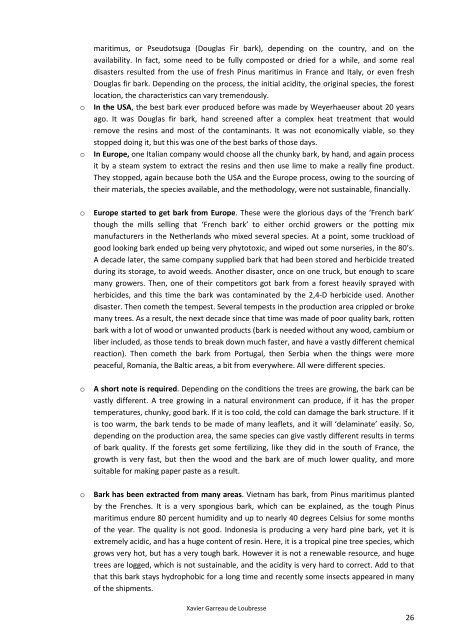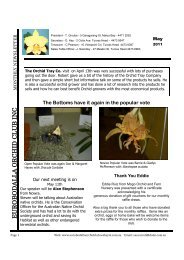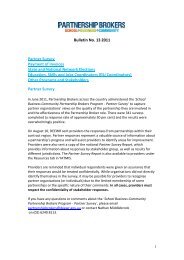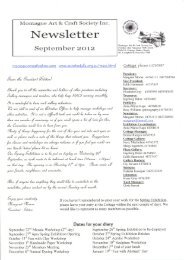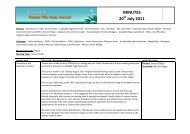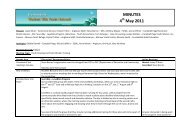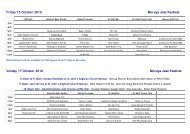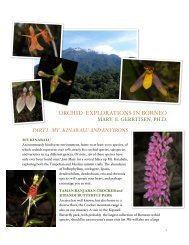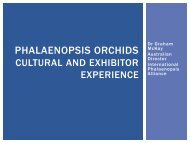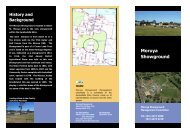Orchid Growing Substrates
Orchid Growing Substrates
Orchid Growing Substrates
You also want an ePaper? Increase the reach of your titles
YUMPU automatically turns print PDFs into web optimized ePapers that Google loves.
o<br />
o<br />
maritimus, or Pseudotsuga (Douglas Fir bark), depending on the country, and on the<br />
availability. In fact, some need to be fully composted or dried for a while, and some real<br />
disasters resulted from the use of fresh Pinus maritimus in France and Italy, or even fresh<br />
Douglas fir bark. Depending on the process, the initial acidity, the original species, the forest<br />
location, the characteristics can vary tremendously.<br />
In the USA, the best bark ever produced before was made by Weyerhaeuser about 20 years<br />
ago. It was Douglas fir bark, hand screened after a complex heat treatment that would<br />
remove the resins and most of the contaminants. It was not economically viable, so they<br />
stopped doing it, but this was one of the best barks of those days.<br />
In Europe, one Italian company would choose all the chunky bark, by hand, and again process<br />
it by a steam system to extract the resins and then use lime to make a really fine product.<br />
They stopped, again because both the USA and the Europe process, owing to the sourcing of<br />
their materials, the species available, and the methodology, were not sustainable, financially.<br />
o<br />
Europe started to get bark from Europe. These were the glorious days of the ‘French bark’<br />
though the mills selling that ‘French bark’ to either orchid growers or the potting mix<br />
manufacturers in the Netherlands who mixed several species. At a point, some truckload of<br />
good looking bark ended up being very phytotoxic, and wiped out some nurseries, in the 80’s.<br />
A decade later, the same company supplied bark that had been stored and herbicide treated<br />
during its storage, to avoid weeds. Another disaster, once on one truck, but enough to scare<br />
many growers. Then, one of their competitors got bark from a forest heavily sprayed with<br />
herbicides, and this time the bark was contaminated by the 2,4-D herbicide used. Another<br />
disaster. Then cometh the tempest. Several tempests in the production area crippled or broke<br />
many trees. As a result, the next decade since that time was made of poor quality bark, rotten<br />
bark with a lot of wood or unwanted products (bark is needed without any wood, cambium or<br />
liber included, as those tends to break down much faster, and have a vastly different chemical<br />
reaction). Then cometh the bark from Portugal, then Serbia when the things were more<br />
peaceful, Romania, the Baltic areas, a bit from everywhere. All were different species.<br />
o<br />
A short note is required. Depending on the conditions the trees are growing, the bark can be<br />
vastly different. A tree growing in a natural environment can produce, if it has the proper<br />
temperatures, chunky, good bark. If it is too cold, the cold can damage the bark structure. If it<br />
is too warm, the bark tends to be made of many leaflets, and it will ‘delaminate’ easily. So,<br />
depending on the production area, the same species can give vastly different results in terms<br />
of bark quality. If the forests get some fertilizing, like they did in the south of France, the<br />
growth is very fast, but then the wood and the bark are of much lower quality, and more<br />
suitable for making paper paste as a result.<br />
o<br />
Bark has been extracted from many areas. Vietnam has bark, from Pinus maritimus planted<br />
by the Frenches. It is a very spongious bark, which can be explained, as the tough Pinus<br />
maritimus endure 80 percent humidity and up to nearly 40 degrees Celsius for some months<br />
of the year. The quality is not good. Indonesia is producing a very hard pine bark, yet it is<br />
extremely acidic, and has a huge content of resin. Here, it is a tropical pine tree species, which<br />
grows very hot, but has a very tough bark. However it is not a renewable resource, and huge<br />
trees are logged, which is not sustainable, and the acidity is very hard to correct. Add to that<br />
that this bark stays hydrophobic for a long time and recently some insects appeared in many<br />
of the shipments.<br />
Xavier Garreau de Loubresse<br />
26


